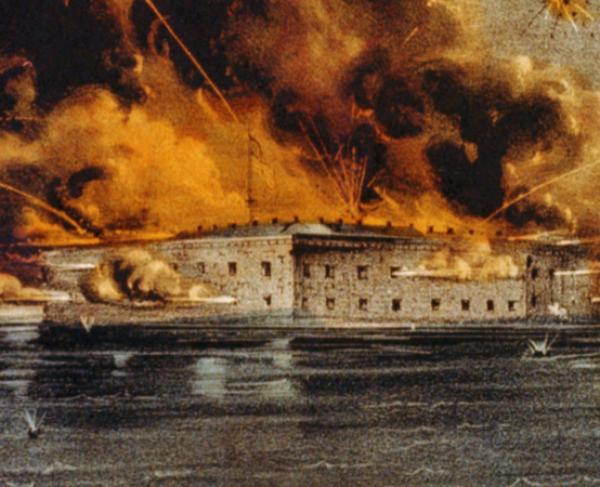Fort Harrison

At the end of the bloody Overland Campaign, Union General Ulysses Grant targeted Petersburg, Virginia. Petersburg was the second largest city in Virginia which acted as a communications and railroad supply lifeline to Richmond, the capital of the Confederacy. Grant crossed the James River in June 1864 and, failing to capture the city by immediate attacks, besieged Petersburg. The operation would last for nine months.
Throughout the summer, Grant pressed his opponent, Confederate General Robert E. Lee north and south of the James River, simultaneously. North of the James, Union soldiers threatened the critical railroad line between Richmond and Petersburg, resulting in the 1st Battle of Deep Bottom, the Battle of the Crater, and 2nd Battle of the Deep Bottom.
On September 29, 1864, Grant gave ordered to General Benjamin F. Butler to attack New Market Heights north of the James River. Butler surprised the Confederates by staging a two-prong attack on the right and center fronts. At the same time, Butler assigned General Edward Ord to attack Fort Harrison to the west. Since both areas were being attacked simultaneously, the Confederates couldn’t parry both thrusts.
Fort Harrison was the strongest part of the defense because of its strategic placement with clear site lines toward the James River. With only 1,750 Confederates in the fort compared to the 4,150 Union soldiers that surrounded them, the Fort quickly fell. In the battle, General Hiram Burnham lost his life and in honor of his death the fort was renamed Fort Burnham. General Ord was critically wounded in the altercation and was unable to command for several months. Knowing the importance of Fort Harrison, General Lee attempted to recapture it the following day. This attack suffered from poor coordination, however, and failed.
In the attack’s other prong at New Market Road, the African American division of the XVIII Corps was especially noted for bravery. Of the sixteen Medals of Honor given to African Americans during the Civil War, fourteen of those recipients gained them during this battle. Two African American men, Sergeant Major Thomas R. Hawkins and Sergeant Alexander Kelly, and one white man, Lieutenant Nathan Edgerton, rushed to save regimental flags from the front lines after the flag bearers were killed. All three became Medal of Honor recipients and their bravery was memorialized in the 2013 painting Three Medals of Honor by Don Troiani, which currently hangs at the Union League of Philadelphia. These Union gains, along with the fall of Atlanta and Union victories in the Shenandoah Valley, did not go unnoticed in the November 1864 presidential election, in which President Abraham Lincoln was reelected.
After the initial victory of these defensive lines, trenches, and forts, skirmishing continued until the end of the war in 1865. This “trench warfare” would be acknowledged as a precursor to the trench warfare that would feature prominently in World War I. In addition, the constant presence of Union soldiers in this area forced Lee to move precious soldiers from Petersburg to this front. This weakened Lee’s lines near Petersburg and contributed to the fall of the city on April 2, 1865. With Petersburg’s surrender, Richmond surrendered the next day. This pressure successfully took the Confederate’s capital city and would be a large factor in the surrender of Lee on April 9th at Appomattox Court House.


